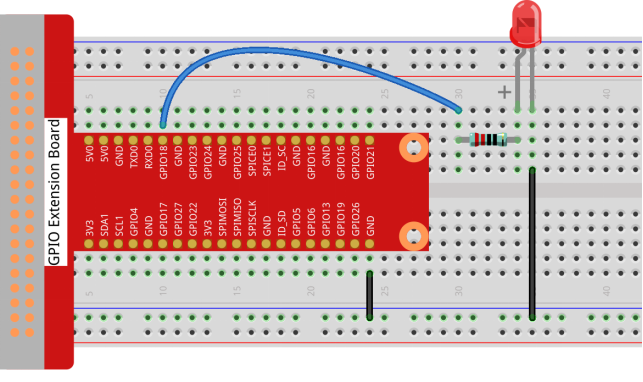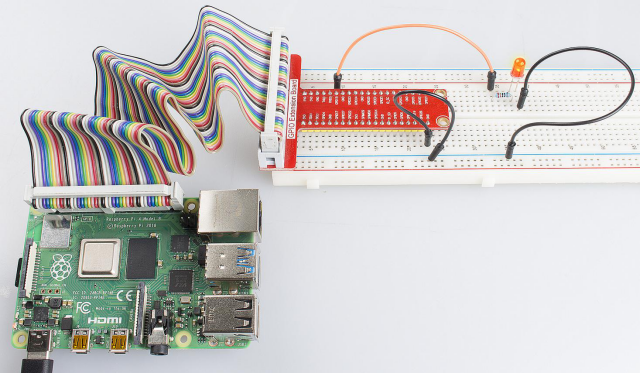Introduction
In this lesson, we will try something interesting – gradually increase and decrease the luminance of an LED with PWM, just like breathing. So we give it a magical name – Breathing LED.
Components
– 1 * Raspberry Pi
– 1 * Breadboard
– 1 * LED
– 1 * Resistor (220Ω)
– Jumper wires
Principle
PWM
Pulse Width Modulation, or PWM, is a technique for getting analog results with digital means. Digital control is used to create a square wave, a signal switched between on and off. This on-off pattern can simulate voltages in between full on (3.3 Volts) and off (0 Volts) by changing the portion of the time the signal spends on versus the time that the signal spends off. The duration of “on time” is called pulse width. To get varying analog values, you change, or modulate, that width. If you repeat this on-off pattern fast enough with some device, an LED for example, the result would be like this: the signal is a steady voltage between 0 and 3.3v controlling the brightness of the LED. (See the PWM description on the official website of Arduino)
Duty Cycle
A duty cycle is the percentage of one period in which a signal is active. A period is the time it takes for a signal to complete an on-and-off cycle. As a formula, a duty cycle may be expressed as:

where is the duty cycle,
is the time the signal is active, and
is the total period of the signal. Thus, a 60% duty cycle means the signal is on 60% of the time but off 40% of the time. The “on time” for a 60% duty cycle could be a fraction of a second, a day, or even a week, depending on the length of the period.

In this experiment, we use this technology to make the LED brighten and dim slowly so it looks like our breath.
Schematic Diagram

Experimental Procedures
Step 1: Build the circuit.

For C Language Users:
Step 2: Change directory.
cd /home/pi/Sunfounder_SuperKit_C_code_for_RaspberryPi/04_PwmLedStep 3: Compile.
gcc PwmLed.c -o PwmLed -lwiringPi -lpthreadStep 4: Run.
sudo ./PwmLedFor Python Users:
Step 2: Change directory.
cd /home/pi/Sunfounder_SuperKit_Python_code_for_RaspberryPi/Step 3: Run.
sudo python3 04_pwmLed.pyNow you will see the gradual change of the LED luminance, between bright and dim.

Summary
Through this experiment, you should have mastered the principle of PWM and how to program Raspberry Pi with PWM. You can try to apply this technology to DC motor speed regulation later
